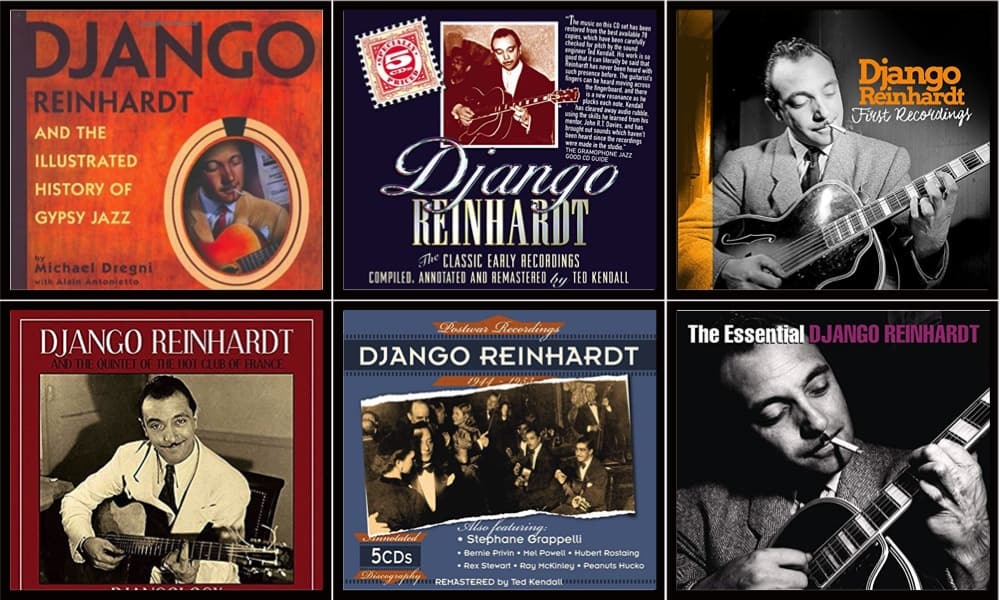Features
The One and Only Django Reinhardt – Part 2

Welcome back to Part 2 of our insight into the style of Django Reinhardt.
Django accompanies violinist Stephane Grappelli in a 1939 duet of ‘Out of Nowhere’:
Check out the way he kicks off the band and sets this hot jazz groove in ‘Miss Annabelle Lee’ from 1937:
In 1939, Django and Duke Ellington band members Rex Stewart, Barney Bigard, and Billy Taylor recorded this little gem:
In the 1930s and 40s, Django was one of the most in demand session players in Paris. His addition to any recording almost guaranteed the success of the track. Listen to Django own the rhythm section for a date for Parisian sax player Andre Ekyan in 1939 playing ‘The Sheik’:
Here is Tchavolo Schmitt and Fapy Lafertin, two of the greatest contemporary players in the style of Django accompanying each other in a performance of ‘Je suis seul ce soir’:
Adrien Moignard and Mathieu Chatelain swap guitars here for some quick demonstrations of Django’s rhythm style:
Here Benoit Convert, Adrien Moignard and Jeremie Arranger play ‘Donna Lee’.
The device of playing octaves on the guitar and muting the strings between the notes – in common usage now – was pioneered by Django. Here Django plays ‘Daphne’ in Rome, 1949:
and in ‘Place de Broukere,’ also in 1949. Listen at about .49 seconds into the song:
Jimi Hendrix used this technique extensively, check out ‘Villa Nova Junction’ from Woodstock:
Perhaps the most well-known post Django player to feature octave soloing was Wes Montgomery. Here’s Wes with ‘Twisted Blues’:
Artificial harmonics were almost the exclusive territory of classical guitarists, but Django seized on them also to add yet another color to his playing. At 1:34 into this version of Nuages from 1949, he starts his solo with them:
Tal Farlow was known for this later on. Check him out at .45 in ‘Isn’t It Romantic.’
Django, although recognized for his acoustic guitar work in the 1930s-40s, instinctively understood the power of the amplified guitar, not just for volume and the ability to be heard equal to the rest of the band, but as an effect. He embraced distortion, turning the volume of his amp to the point of breaking up deliberately. And when you combine that with also being one of the first jazz guitarists to not only bend a note, but to bend it in tune, you have one of the very first progenitors of what became commonplace in rock and fusion guitar ten and twenty years later. Check Django out at 1:06 in his tune ‘Diminishing Blackness’ from 1951:
Django Reinhardt was a prolific composer, recording artist, and performer.
In his lifetime, he left more than 850 recordings in a phenomenal range of styles and settings. As Django is one the undisputed masters and progenitors, guitarists would do well to search out his catalogue and discover for themselves his breathtaking command of the instrument.
-
Jazz Guitar Lessons2 weeks ago
New JGT Guitar Lesson: Analyzing “Without A Song”
-
Jazz Guitar Lessons4 weeks ago
New JGT Guitar Lesson: Considering “Falling Grace”
-
Artist Features1 week ago
New Kurt Rosenwinkel JGT Video Podcast – July 2024
-
Artist Features3 weeks ago
JGT Talks To Seattle’s Michael Eskenazi



















